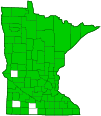black bindweed
(Fallopia convolvulus)
Conservation • Wetland • Description • Habitat • Ecology • Use • Distribution • Taxonomy
Description |
||
Black bindweed is an annual vine that rises on a single stem from deep, fibrous roots. It does not produce rhizomes. It climbs by spiraling counter-clockwise (twining) around the stem of another plant. The stems are trailing or twining, 20″ to 40″ long, light green or bright red, not woody (herbaceous), not glaucous, slightly angled, and freely branched at the base. They are somewhat rough to the touch due to the presence of short, stiff hairs that are often arranged in lines. The stems and leaves do not have a milky latex. The leaves are alternate, widely spaced, ¾″ to 2⅜″ long, and ¾″ to 2″ wide. They are on 3 ⁄16″ to 2″ long leaf stalks. The leaf stalks are somewhat roughened with lines of short, stiff hairs. There is a small, hairless, membraneous sheath (ocrea) that surrounds the stem at the base of each leaf stalk. The leaf blade is heart-shaped or arrow-shaped with the basal lobes sometimes directed inwards, though this may not be apparent. It is sharply pointed at the tip with curved sides along the tip. The upper surface is hairless. The lower surface is usually powdery (mealy) and is not glaucous. The margins are untoothed and somewhat wavy. The inflorescence is an unbranched, spike-like, ¾″ to 4″ long arrangement of several clusters of 3 to 6 flowers each at the end of the stems and branches and also rising from the leaf axils. The clusters are stalkless or on stalks up to 4″ long. The individual flowers are on 1 ⁄32″ to ⅛″ long stalks. The central axis of the inflorescence (rachis) is somewhat roughened with lines of short, stiff hairs. Each flower is ⅛″ to 3 ⁄16″ long. There are 5 elliptic to inversely egg-shaped tepals. The tepals are greenish white and often have a pink or purple tinge at the base. The outer 3 tepals are ridged (keeled) but not winged. The fruit is a dull, black, slightly roughened, 3-angled achene. It is entirely enclosed within the 3 green, persistent, keeled but not winged sepals. |
||
Height |
||
Twining, 20″ to 40″ long |
||
Flower Color |
||
Greenish-white |
||
Similar Species |
||
Climbing false buckwheat (Fallopia scandens) flowers and fruits are winged. The sides of the black achene are shiny and smooth. Fringed black bindweed (Fallopia cilinodis) ocrea has stiff, downward-pointing hairs. Field bindweed (Convolvulus arvensis) is a longer vine, reaching up to 6½′ in length. The stems and leaves have a milky latex. The leaf stalk does not have an ocrea at the base. The flower is large, showy, and trumpet-shaped. The fruit is a capsule. Hedge bindweed (Calystegia sepium) is a longer vine, reaching up to 10′ in length. The stems and leaves have a milky latex. The leaf stalk does not have an ocrea at the base. The flower is large, showy, and trumpet-shaped. The fruit is a capsule. |
||
Habitat |
||
Cultivated grain fields, railroads, roadsides, disturbed areas. Full sun. |
||
Ecology |
||
Flowering |
||
May to October |
||
Pests and Diseases |
||
|
||
Use |
||
|
||
Distribution |
||||
|
Sources |
|||
| 2/21/2023 | ||||
Nativity |
||||
Native of northern Africa, Europe, Asia, and the Indian subcontinent. Introduced and naturalized in North America. |
||||
Occurrence |
||||
Common Black bindweed is found in every state, province, and territory in North America except Nunavut. |
||||
Taxonomy |
|||
| Kingdom | Plantae (Plants) | ||
| Subkingdom | Pteridobiotina | ||
| Phylum | Tracheophyta (Vascular Plants) | ||
| Class | Magnoliopsida (Dicots) | ||
Order |
Caryophyllales (Pinks, Cactuses, and Allies) | ||
Family |
Polygonaceae (knotweed) | ||
| Subfamily | Polygonoideae | ||
| Tribe | Polygoneae | ||
| Subtribe | Reynoutriinae | ||
Genus |
Fallopia | ||
Subordinate Taxa |
|||
|
|||
Synonyms |
|||
Bilderdykia convolvulus Polygonum convolvulus var. convolvulus Reynoutria convolvulus Tiniaria convolvulus |
|||
Common Names |
|||
black bindweed climbing buckwheat cornbind dullseed cornbind wild buckwheat |
|||
Glossary
Achene
A dry, one-chambered, single-seeded seed capsule, formed from a single carpel, with the seed attached to the membranous outer layer (wall) only by the seed stalk; the wall, formed entirely from the wall of the superior ovary, does not split open at maturity, but relies on decay or predation to release the contents.
Glaucous
Pale green or bluish gray due to a whitish, powdery or waxy film, as on a plum or a grape.
Herbaceous
A plant without a persistent, above-ground, woody stem, with the leaves and stems usually dying back to the ground at the end of the growing season.
Keeled
Folded, as in a grass blade, or with a raised ridge, as in a grass sheath; like the keel of a boat.
Ocrea
A sheath around the stem at the base of a petiole formed from the stipules; a feature of many members of the Polygonaceae.
Rachis
The main axis of a compound leaf, appearing as an extension of the leaf stalk; the main axis of an inflorescence.
Rhizome
A horizontal, usually underground stem. It serves as a reproductive structure, producing roots below and shoots above at the nodes.
Sepal
An outer floral leaf, usually green but sometimes colored, at the base of a flower.
Tepal
Refers to both the petals and the sepals of a flower when they are similar in appearance and difficult to tell apart. Tepals are common in lilies and tulips.
Trailing
Prostrate on the ground and creeping, but not rooting at the tip.
Twining
Growing in a spiral usually around a stem of another plant that serves as support.
Visitor Photos |
|||||
Share your photo of this plant. |
|||||
| This button not working for you? Simply email us at info@MinnesotaSeasons.com. Attach one or more photos and, if you like, a caption. |
|||||
|
|||||
MinnesotaSeasons.com Photos |
|||||
Plant |
|||||
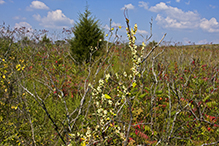 |
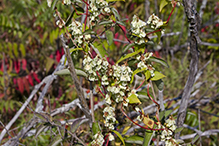 |
||||
Inflorescence |
|||||
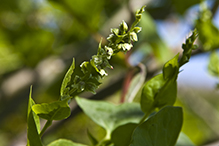 |
|||||
Leaves |
|||||
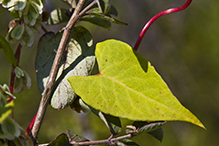 |
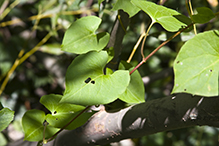 |
||||
Infructescence |
|||||
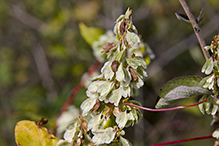 |
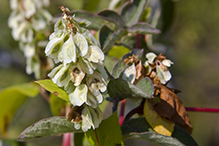 |
||||

Slideshows |
||

Visitor Videos |
|||
Share your video of this plant. |
|||
| This button not working for you? Simply email us at info@MinnesotaSeasons.com. Attach a video, a YouTube link, or a cloud storage link. |
|||
Other Videos |
|||
| Leaf-cutter Bee (Megachile centuncularis) at work Jochem Kuhnen |
|||
About
Published on Jul 8, 2012 A Leaf-cutter Bee (Megachile centuncularis) at work cutting out a fragment of Black Bindweed (Fallopia convolvulus). There were hardly any intact leafs left! Filmed in Nijmegen's city centre on July 7th 2012. |
|||

Visitor Sightings |
|||||
Report a sighting of this plant. |
|||||
| This button not working for you? Simply email us at info@MinnesotaSeasons.com. Be sure to include a location. |
|||||
|
|||||
MinnesotaSeasons.com Sightings |
|||||
Badoura Jack Pine Woodland SNA Bertram Chain of Lakes Regional Park Charles A. Lindbergh State Park Minnesota Valley NWR, Rapids Lake Unit Northern Tallgrass Prairie NWR, Touch the Sky Prairie Unit Pembina Trail Preserve SNA, Crookston Prairie Unit Sand Prairie Wildlife Management and Environmental Education Area |
|||||

|
Created: Last Updated: © MinnesotaSeasons.com. All rights reserved. |
